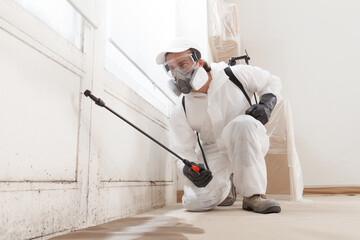Property damage can occur unexpectedly due to water, fire, mold, or environmental hazards. When such damage happens, timely remediation is essential to restore safety, prevent further deterioration, and protect the value of a property. Remediation involves identifying, controlling, and repairing affected areas, using specialized techniques and equipment. Understanding the benefits, processes, and best practices of remediation ensures effective restoration of homes, offices, and commercial spaces.

The Importance of Remediation
Remediation is critical in addressing damage and maintaining safe, functional environments. The key benefits include:
- Safety – Contaminants such as mold, soot, or chemical residues can pose health risks. Remediation eliminates these hazards, creating a safe environment for residents or employees.
- Preventing further damage – Untreated water leaks, mold growth, or chemical spills can escalate, causing structural damage or spreading contamination.
- Property preservation – Timely remediation helps protect structural integrity, finishes, and valuable assets.
- Health protection – Removing allergens, bacteria, and toxins reduces respiratory issues and allergic reactions.
- Peace of mind – Knowing that trained professionals are managing the problem provides confidence and reassurance.
By addressing damage quickly and thoroughly, remediation minimizes risks and restores spaces to their original condition.
Common Types of Remediation
Remediation services cover a variety of damage scenarios, each requiring specific techniques and expertise:
- Water damage remediation – Involves removing standing water, drying affected areas, and treating for mold growth. Sources can include floods, leaks, or appliance failures.
- Fire and smoke remediation – Includes cleaning soot, removing smoke odors, and restoring surfaces damaged by heat or flames.
- Mold remediation – Identifies mold sources, removes contaminated materials, and treats areas to prevent recurrence.
- Environmental hazard remediation – Deals with asbestos, lead, or chemical spills, following strict safety guidelines to ensure proper containment and disposal.
- Biohazard remediation – Addresses contamination from accidents, medical incidents, or sewage, using specialized cleaning and sanitizing methods.
Choosing the right remediation approach depends on the type of damage, the severity of the situation, and the environment affected.
The Remediation Process
Professional remediation follows a systematic approach to restore affected spaces effectively:
- Assessment and inspection – Technicians evaluate the extent of damage, identify hazards, and determine the appropriate remediation strategy.
- Containment – Contaminated areas are isolated to prevent the spread of pollutants, mold spores, or hazardous materials.
- Removal of damaged materials – Porous or compromised materials, such as drywall, flooring, or insulation, may be safely removed.
- Cleaning and sanitization – Specialized equipment and cleaning solutions eliminate contaminants, neutralize odors, and sanitize surfaces.
- Drying and dehumidification – Water-damaged areas are dried thoroughly to prevent mold growth and structural damage.
- Repairs and restoration – Once the space is safe and clean, repairs and reconstruction restore the property to its pre-damage condition.
- Monitoring and verification – Final inspections confirm that all hazards have been addressed and the property is fully restored.
This structured process ensures safety, thoroughness, and long-lasting results.
Health and Safety Considerations
Remediation often involves exposure to harmful substances, making safety a top priority:
- Protective equipment – Technicians use masks, gloves, suits, and respirators to prevent exposure to contaminants.
- Proper ventilation – Air circulation and filtration prevent inhalation of airborne particles during cleaning.
- Waste disposal – Contaminated materials are disposed of according to local regulations to prevent environmental harm.
- Safety protocols – Strict guidelines minimize risks during handling, removal, and cleaning of hazardous substances.
Following safety measures ensures the well-being of both occupants and remediation professionals.
Choosing a Professional Remediation Service
Selecting a reliable remediation service is essential for effective restoration:
- Experience and training – Professionals should have specialized training in water, fire, mold, and environmental hazard remediation.
- Equipment and technology – Advanced tools such as industrial dryers, air scrubbers, and thermal cameras ensure efficient and thorough cleanup.
- Reputation and reviews – Positive feedback and references from previous clients indicate reliability and quality of service.
- Compliance with regulations – Experts follow local safety, environmental, and industry standards for proper remediation.
- Emergency response – A prompt response can minimize damage, prevent secondary issues, and expedite recovery.
Professional services provide expertise, efficiency, and peace of mind during stressful and complex situations.
Preventing Future Damage
While remediation addresses existing issues, proactive measures help reduce the risk of future damage:
- Regular inspections – Detect water leaks, mold growth, or structural issues early.
- Proper ventilation and humidity control – Maintain airflow and use dehumidifiers to prevent mold development.
- Routine maintenance – Clean gutters, inspect roofs, and service plumbing systems to reduce the likelihood of water damage.
- Environmental awareness – Avoid storing hazardous materials improperly and monitor for chemical or biohazard risks.
Preventative strategies complement remediation efforts, ensuring a safe and healthy property over the long term.
Remediation is an essential service for restoring homes, offices, and commercial spaces after water, fire, mold, or environmental damage. Through thorough assessment, containment, cleaning, and restoration, professional remediation protects health, preserves property value, and prevents further deterioration.
By hiring trained experts and following safety guidelines, property owners can address damage efficiently, minimize stress, and achieve lasting results. Combining professional remediation with preventative measures ensures a safe, clean, and well-maintained environment for years to come.